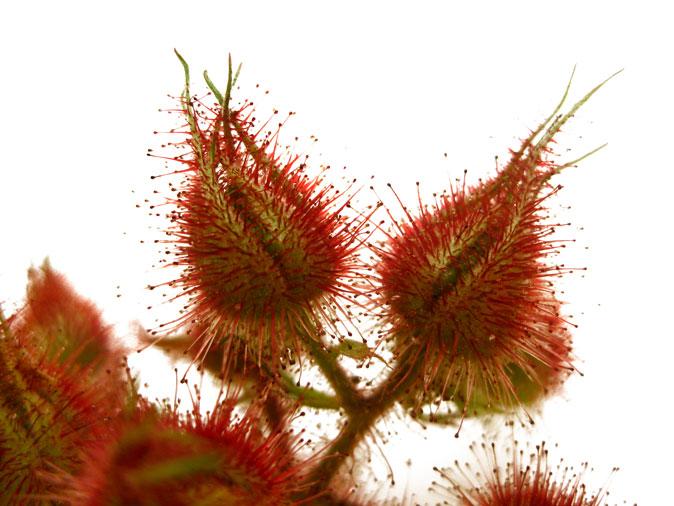What to do about invasive species, which are having a growing and generally detrimental effect on Europe’s environment and economies, is the subject of discussion in both the European Parliament and UK Parliament this week.
Invasive alien species are animals and plants introduced accidentally (or deliberately) into an environment where they are not normally found. Although estimates indicate that there are some 12,000 alien species in Europe, only 10-15% have become invasive, that is, have become damaging and of concern. However, just these 10-15% cost Europe €12 billion a year. So while the European Union has put in place its 2020 biodiversity strategy, it has not yet managed to provide a comprehensive framework to address this threat to European biodiversity.
The EU legislation pending a vote has been under discussion since September 2013 and has steadily gathered support from various European bodies and committees. The case for new legislation is persuasive, and in all likelihood it will pass and become a new EU regulation, bringing with it legal obligations on member states to ban the import, keeping, sale, exchange and so on of specific species.
But foresters and horticulturists, whose professions depend on valuable exotic plant species, have raised concerns. After all, many “alien” species of plants have long been cultivated for timber or for ornamental purposes – too broad a ban and these will be drawn into it.
Some of the poorer member states have argued that the proposed measures for surveillance, monitoring and control of invasive alien species will put a heavy burden on their already over-stretched budgets. It’s estimated that this legislation will cost the EU €560,000 between 2015 and 2021 – small change compared to the cost the damage these species cause, but an extra cost nonetheless. But, most importantly, questions remain about the results: experience from around the world suggests that the large sums of money spent on control and eradication programmes have not yielded the promised results.

No Proven Response, Yet
Some colleagues and I carried out a historical analysis of the spread and management of Lantana camara, wild or red sage, one of world’s top 50 worst invasive species. We found that despite many different measures – mechanical removal, chemical poisoning, biological control – Lantana continued to spread throughout subtropical regions during the 19th and 20th centuries.
It was evident that countries spent large sums of money trying to control the plant. For example, in 1973 the cost of Lantana control in Queensland, Australia was estimated at A$1 million (US$800,000) per year. In South Africa, chemical poisoning cost an estimated 1.7 million rand (US$250,000) per year in 1999. Indian estimates in 2009 put control costs at 9,000 rupees per hectare (US$200) – reaching a total of US$2.6 billion to tackle the 13m hectares where it has spread in India, a sum greater than the GDP of the neighbouring Maldives islands.
Despite all this money spent in Australia, South Africa and India, the notorious weed has continued to spread. And unfortunately it is not the only invasive species that has proved unmanageable: hundreds or thousands of others have spread across the world, defying all attempts by countries to make their borders “biosecure”.
New Approach Required
To deal with alien and invasive species that have already made it through porous borders and have established themselves in their new homes, we need more creative approaches than throwing mechanical excavators, chemicals, and enormous amounts of money at the problem.
With the help of NGOs, some rural communities in India have started a cottage industry of making baskets and furniture from Lantana. Other radical solutions that have been proposed to control invasive species include eating them.
A Chicago restaurant owner sells Asian carp burgers at his specialist fish shop to help the problem of this giant fish infesting North America’s Great Lakes. Others making dinner out of invasive alien species include Miya’s Sushi in New Haven, Connecticut, which has a special invasive species menu, through which they “return to the roots of sushi, meaning simply to use what we have available.” Crayfish Bob in London offers a variety of invasive crayfish dishes, providing “quality food for a better environment”.
So the new EU legislation is a precautionary measure to prevent the ecological, economic and social costs that invasive species might in future impose. This will try to ensure Europe is more biosecure through a variety of control measures at borders, tackling those species that have made it through, and efforts to eradicate those that have become a nuisance.
But the costly failures elsewhere in controlling and managing invasive species makes one wonder whether we should find more creative ways of dealing with the problem: local economies based on harvesting invasive species, or recreational hunting, fishing or foraging as a part of nature tourism, perhaps. In any case, a new approach is needed.
Shonil Bhagwat has received funding from Ecosystem Services for Poverty Alleviation programme of the Natural Environment Research Council, Economic and Social Research Council and Department for International Development, UK.
This article was originally published on The Conversation. Read the original article.
